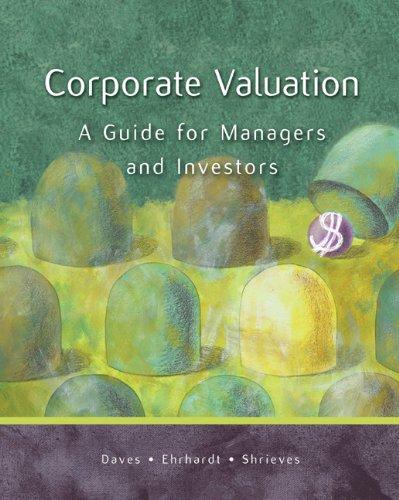Question
Damien Mask founded Mask in 1984 in Melbourne, Australia, with $1,000 and a unique vision of how technology should be designed, manufactured and sold. More
Damien Mask founded Mask in 1984 in Melbourne, Australia, with $1,000 and a unique vision of how technology should be designed, manufactured and sold. More than 4.4 million customers later and with an annual IT budget of approximately $500 million per year, Mask has made an indelible mark on the computer industryand the world. The company ships more than 1,000 systems every day to customers in 120 countries and employs 50,000 people worldwide. Long known as one of the worlds largest manufacturers of personal computers and laptops, Mask has grown into a multi-national hardware and infrastructure provider. It also provides IT services and solutions across its branches. Rapid growth led to regionally specific expansion from country to country. Mask ended up with unique manufacturing facilities, regional order management systems, and different operating processes and systems throughout the world. Lynda Smith, Masks Vice President of IT Strategy, Technology & Governance, is charged with mapping out a future direction for the IT giant, with a three-year roadmap driven by Masks Enterprise Architecture (EA) team. At an enterprise level this roadmap includes five major programs, each of which involves investments in the tens of millions of dollarsand, in some cases, hundreds of millions of dollars.Some examples of these programs include: Global Quote to Cash, Global Service Delivery, Solution Selling, Global Manufacturing Execution, and Recurring and Usage based transactions. SAP is providing executive guidance for this transformative journey, working closely with Smith and her enterprise architects to establish a long-term view of the requisite processes, systems and technologies. Individual projects are undertaken to build general-purpose capabilities, not merely to fulfill immediate needs. The Melbourne Branch has been operating with a legacy Customer Relationship Management (CRM) system and the system is not integrated with its Billing System. Currently, customer representatives must manually input customer information into the Billing System so that customers can be sent an Electronic bill. The CRM and Billing Systems are connected to a legacy database management system that runs on a Legacy Server. The EA team is responsible for designing the future data, application, and infrastructure components of Enterprise. The current application and data architecture for Mask is shown below. Application Data Applications Officer Customer / Business Representatives Database Administrators Network Engineers
1. Discuss the business problems of Mask that led to him forming an Enterprise Architecture Program?
2. Discuss the CSVLOD model and its relevance to this Business context?
3. Demonstrate how the CSVLOD model could be applied to this context and describe how it can help facilitate Business and IT Strategic Alignment?
4. Discuss the expected Business Benefits for the organisation?
5. Provide an ideal solution road map that you would apply to the Melbourne branch? Explain your solution with the appropriate citations.
Step by Step Solution
There are 3 Steps involved in it
Step: 1

Get Instant Access to Expert-Tailored Solutions
See step-by-step solutions with expert insights and AI powered tools for academic success
Step: 2

Step: 3

Ace Your Homework with AI
Get the answers you need in no time with our AI-driven, step-by-step assistance
Get Started


